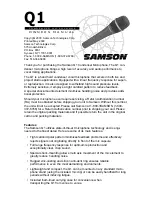
EtherHaul Operation, Administration and Maintenance Manual
Page 30
4.2
Advanced Settings
Figure 4-2 Radio Page: Advanced Settings
This section allows configuring the following parameters:
Long Range Mode – checkbox to enable the mode (for radio links over 4500m
and up to 7000m). Note that Long Range support depends on product’s specs
and is NOT relevant for V-Band systems).
ATPC – Automatic Transmit Power Control adjusts transmitter output power of
the local system based on the varying signal level at the remote receiver.
Note that ATPC support depends on product’s specs and is supported on EH-
1200F/FX (TDD) systems only.
ATPC allows the transmitter to operate at less than maximum power for most of the
time and when fading conditions occur, transmit power will be increased as needed
until the maximum configured value is reached. ATPC messages are carried over the
radio over radio communication channel.
The purpose of ATPC is a) to reduce interference to other radios operation in the
same channel/band and to allow better frequency reuse; and b) to reduce
transmitter power consumption and prolong system’s components life.
ATPC is supplementary to adaptive modulation and works before adaptive
modulation changes modulation profiles.
Interference avoidance algorithm is implemented in order to overcome the main
drawback of use of ATPC: interference from other links that may degrade the radio
link performance. Besides setting the Target RSSI, the user can also set the Target
CINR that will notify the remote transmitter to increase its Tx power to maintain
CINR is above the threshold set.
Mode of operation: the local system compares the actual received RSSI to the ATPC
Target RSSI. If the difference in values is 2dB or higher (Delta=>2dB), a message to
remote transmitter will be sent, asking to change its Tx power.
















































